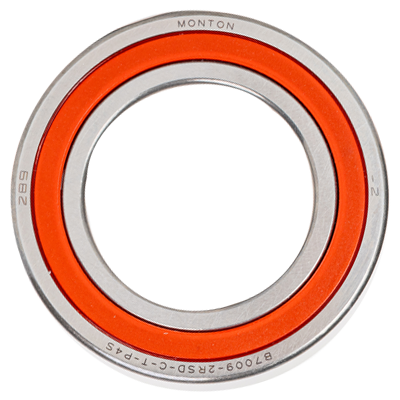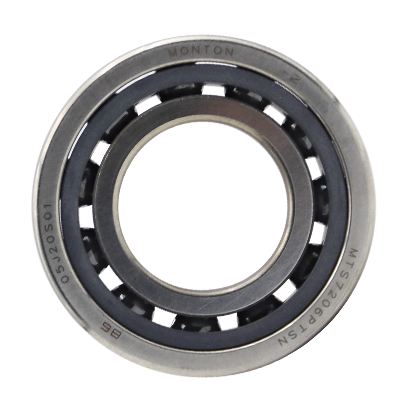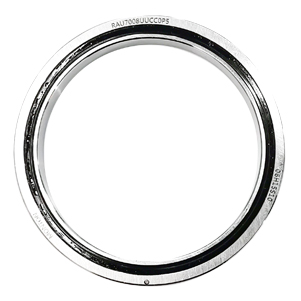Bearing and seal design considerations for tunnel boring machines
Once construction starts, there’s no going back. A tunnel boring machine (TBM) is not equipped with a reverse gear, so it is imperative that the machine is able to complete its job without suffering any significant mechanical failure on route. Where problems do occur, accessing the machine for repair can be a complex, costly and time-consuming project, especially with the main slewing bearing installed inside the TBM’s gear box. The main slewing bearing is the heart of the machine and in case of failure, it cannot be replaced easily, potentially causing months of delays and cost overruns that could easily add up to millions of dollars.
For design engineers, the challenge of delivering high levels of reliability and availability are compounded by the extremely tough working conditions associated with tunnelling works. TBMs combine several highly undesirable operating conditions for key components, including slow rotating speeds, high static and shock loads, and a wet, dirty environment. Together, these characteristics are a recipe for accelerated wear and component damage.
For decades, SKF has collaborated with major TBM manufacturers to develop robust bearing, sealing and lubrication solutions that can meet the requirements of the most demanding tunnelling projects in the world. This article describes some of the key challenges associated with the design, operation and maintenance of these components, and the solutions available to address them.
Cutting disc bearings
A large TBM uses a large number of cutting discs, each rotating on a pair of taper roller bearings (TRB). In operation, these bearings are subject to high transient loads, which rise dramatically as the disc is forced into the rock and are suddenly released as the material fractures. The rotating speed of the disc depends on its position on the cutter head, but it is typically in the range of 10 to 20 rpm. The use of ever-larger TBMs has led to a commensurate increase in cutter disc diameter, which has grown from a standard of 13 inches some years ago to 17, or even 19 inches, on the largest modern machines.
The location of cutting disc TRBs makes it very likely that bearing surfaces will become contaminated during operation. This, combined with the presence of extreme shock loads means bearing manufacturers must design the bearings to cope with uneven loading and highly localised forces on rollers and raceway surfaces. At the same time, consideration must be given to the nature of a premature bearing failure should it occur. The priority here is to avoid complete fracture of a raceway, which would lead to blocking of a disc leading to damage of multiple discs.
Building a bearing that can handle this environment requires careful attention to geometry, material selection and surface treatment approach. Design engineers need to make use of proprietary finite element analysis tools to optimise key bearing design and manufacturing parameters, to deliver the best combination of characteristics. Small adjustments to raceway geometry can have a big impact on the bearing’s ability to cope with irregular loads, for example, while the use of precisely controlled case-hardening of raceways provides rolling surfaces of sufficient hardness while retaining a tough core to prevent bursting in failure conditions.
Testing cutting disc bearing presents another challenge for manufacturers. There is no test rig available that can adequately reproduce the rigours of real-world operation, and operating conditions can vary significantly from project to project. As a result, bearing design engineers must rely on a combination of experience and computer simulation when evaluating a new design.
The condition of bearings removed from worn cutting discs can also provide useful information about their operating conditions. Expert analysis of wear and damage to bearing surfaces can reveal opportunities to modify operation and maintenance procedures to maximise bearing life. In cases where projects have faced unexpectedly challenging ground conditions, SKF engineering teams have even been able to use insights gained from damaged bearings to produce customised solutions designed to offer improved performance.
Since disc replacement operations are conducted underground, they must be as straightforward as possible, requiring minimal use of time, manpower and specialist tools. The reliable operation of the taper roller bearings inside the discs, however, relies on an appropriate level of pre-load, which must be set by the maintenance team when the bearings are mounted.
In practice, operators have limited ability to assess bearing preload in the field and must rely on the torque measured on the arrangement during assembly. To assist operators in this critical assembly step, the TRBs used in cutting discs are manufactured to tight dimensional tolerances, thereby ensuring the closest possible correlation between mounting torque and preload. Other factors come in to play as well, however, including the condition and lubrication of mounting hardware, so careful inspection of components and adherence to standard mounting protocols are essential. Bearing suppliers can also provide support to operators in the development of appropriate disc bearing replacement procedures and the training of maintenance personnel.
Slewing bearings
While all cutting disc bearings use a broadly similar design, TBM manufacturers are setting higher and differing demands on the design of the main slewing bearing. This is the most critical bearing of the TBM and is the link between the pinion drives and the cutter head, while also taking over the huge loads induced during tunnelling operations. Slewing bearing assemblies can range in size from less than 2m in diameter for micro-tunnelling applications up to more than 8 meters for the largest tunnelling machines. Manufacturers may use different bearing arrangements depending on the size of the machine, the anticipated ground conditions and the overall machine architecture.
As a result, a slewing bearing is always a highly customized design, created in close collaboration between the OEM and bearing supplier. SKF has developed specialised design and optimisation software for such projects, allowing the modelling and simulation of complete slewing bearing assemblies including rolling elements, cages, raceways, drive gears and mounting arrangements and consequently have an accurate calculation of bearing and gear lifetime under the given load conditions. Special solutions incorporated into TBM slewing bearing designs can include spring-loaded raceway designs to reduce shock loads in hard rock applications.
The large size of TBM slewing bearings presents challenges for transportation, assembly and maintenance. Depending on OEM requirements, slewing bearings can be supplied as single parts, or fully assembled units including the sealing system. In some cases, bearings may be constructed in segments to facilitate transportation, mounting or replacement in case of unforeseen events occur to the machine.
In addition to the main slewing bearings, there are also special ranges of slewing bearings for screw conveyors and erector systems on the market.
Seals
Slewing bearings rely on proper lubrication and ingress protection to survive. That means that the seals used to protect these bearings against the harsh environment in tunnel boring are a project-critical component.
Like the slewing bearing assemblies themselves, sealing solutions for TBM main bearings need to be optimised to suit the needs of the typical applications as well as customized projects with even more extreme conditions. SKF retains full control of the seal design and manufacturing process, formulating its own proprietary materials and using in-house manufacturing processes to ensure precise control of finished seal geometry, regardless of the size of the machine involved.
Slewing bearing seals must achieve multiple objectives: retaining lubricant within the bearing assembly, keeping out water, mud and debris and accommodating the significant misalignment that can occur during operation. The seal must be able to fulfil these duties throughout the full duration of the project, even while subject to continual abrasion by rock particles.
To achieve the desired level of performance, several lip seals in series with lubrication in between them are commonly used. SKF’s TBM seals are designed by utilizing FEA to consider all load cases such as misalignments, pressurization, grease flushing and even installation behavior.
To simplify assembly processes, and to facilitate on-site replacement of seals, should this be required, SKF has developed a specialised welding process using compact, handheld equipment that allows engineers to operate in confined spaces. This process allows main seals to be installed without the need to remove the cutting head and thereby reduces downtime significantly.
Other bearings and lubrication solutions
In addition to the highly specialised components developed specifically for TBM applications, SKF provides a wide range of other components, systems and solutions for machine manufacturers. These include standard bearings and seals used in screw conveyor drives, erector bearings, and other ancillary equipment, along with sophisticated centralised lubrication systems that can inject oil or grease directly into bearings in precise quantities to ensure optimum lubrication with minimal wastage or environmental contamination.
Remanufacturing
As operators look to maximise the lifetime value of their assets, they are increasingly looking for opportunities to re-use complete TBMs and key components on multiple projects. Component re-use can result in lower costs, less environmental impact and smaller parts inventories.
To help manufacturers achieve their objectives, remanufacturing of TBM bearings is a good option. Used bearings are returned to specialist facilities or directly on customer site around the world where they are cleaned, disassembled and inspected. Worn parts are replaced or reconditioned and the completed unit is inspected, documented and returned ready for reinstallation.
(http://www.skf.com)


 English
English Russian
Russian Chinese
Chinese









